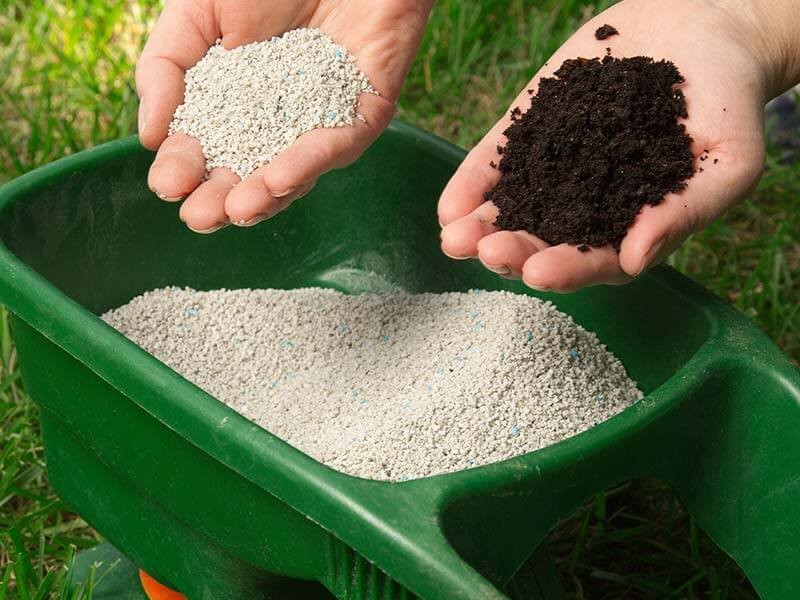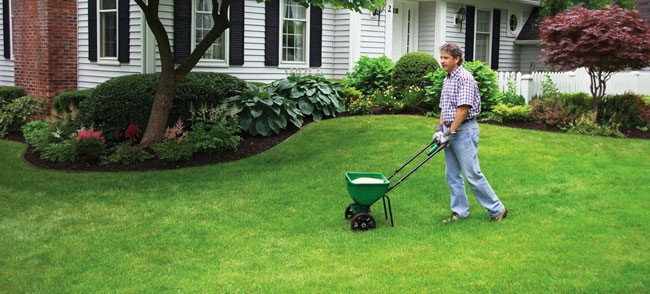
In spring, you need to support the shift of your lawn grass from a period of dormancy to one of active growth. However, how exactly should you fertilize the grass? Doing so incorrectly in terms of time and amount could backfire. With that in mind, here’s our guide on how to fertilize grass in spring properly.
Avoid an Early Spring Application
One of the most common mistakes in spring fertilizing is that homeowners tend to do it earlier than they should. Instead of doing it just as winter has passed, the best period is during the late period of spring. You see, early spring is when your lawn grass utilizes its energy for growing its root systems.
So when you fertilize them at this point, the grass will be encouraged to develop their leaves far earlier than necessary. In other words, your grass won’t have strong and fully established root systems that help keep it alive during extreme weather conditions.
Here is a video discussing when to fertilize:
Know the Type of Grass in Your Lawn
Grasses can be classified as either cool-season or warm-season varieties. Cool-season grasses such as perennial ryegrass and Kentucky bluegrass should not receive a lot of fertilizer during spring. Otherwise, the cool-season grass will have an accelerated growth that makes them unable to tolerate the incoming summer heat.
However, you can use a slow-release fertilizer product is your lawn badly needs nutrients. As for warm-season grass varieties such as bermudagrass and centipede grass, they are best fertilized during April or May once the last spring frost has occurred.
Pick Your Fertilizer Material

There’s a divide between what type of fertilizer should be used for a lawn in spring. For one, there are many people who advocate the use of organic products. They sometimes opt to use a mulching lawn mower to turn grass into fine clippings. These lawn clippings could then be used for a layer of mulch to feed the grass with enough nitrogen. Of course, you can also get a lawn fertilizer that is recognized and labeled as an organic product.
On the other hand, there are homeowners who prefer the use of synthetic fertilizers. The appeal of these fertilizers is that they have a good amount of the essential nutrients, which are nitrogen phosphorus, and potassium. In contrast, organic fertilizers usually have a lower saturation point of these nutrients. Moreover, chemical fertilizers are easier to find in your local gardening and home improvement stores.
Furthermore, synthetic fertilizers can be specialized for a given procedure. For example, there are chemical fertilizers specifically made for summer or late-season applications. In fact, there are products that are mixed with herbicides to save you time and effort in tending to your lawn. You can read more the review article on AGH for buying suitable lawn fertilizer to be better informed.
Identify the Necessary Amount
No matter what type of fertilizer you choose, you shouldn’t apply more than what’s needed. Grass growth does not automatically improve with each added amount of fertilizer. A lawn that has a dark green shade of grass probably received too much nitrogen.
Furthermore, too much application of the product can lead to fertilizer run-off that affects the source of water such as rivers and groundwater. Thus, it’s important to read the package label. Just to be safe, apply on half of the recommended amount and see what adjustments are needed afterward.
In conclusion, fertilizing your lawn grass in spring is all about the time and the amount. Knowing exactly when to apply the fertilizer will prevent any products from being wasted. Likewise, using just enough will ensure a lush and green grass capable of handling the heat in the upcoming summer season.
We hope that our guide helped you in maintaining the health of your lawn in spring. If you have any queries, do send us a comment.
Guest post by Ann Sanders
Also read: The Basics of Hydroponic Gardening
Self-sufficiency and Preparedness solutions recommended for you:
The Lost Ways (The vital self-sufficiency lessons our great grand-fathers left us)
Backyard Liberty (Obama’s hidden agenda: more than just your guns…)
Survival System (Learn The 7 Secrets Every Family Must Know To Survive Any Disaster Or Crisis)
Food for Freedom (If I want my family to survive, I need my own food reserve)


